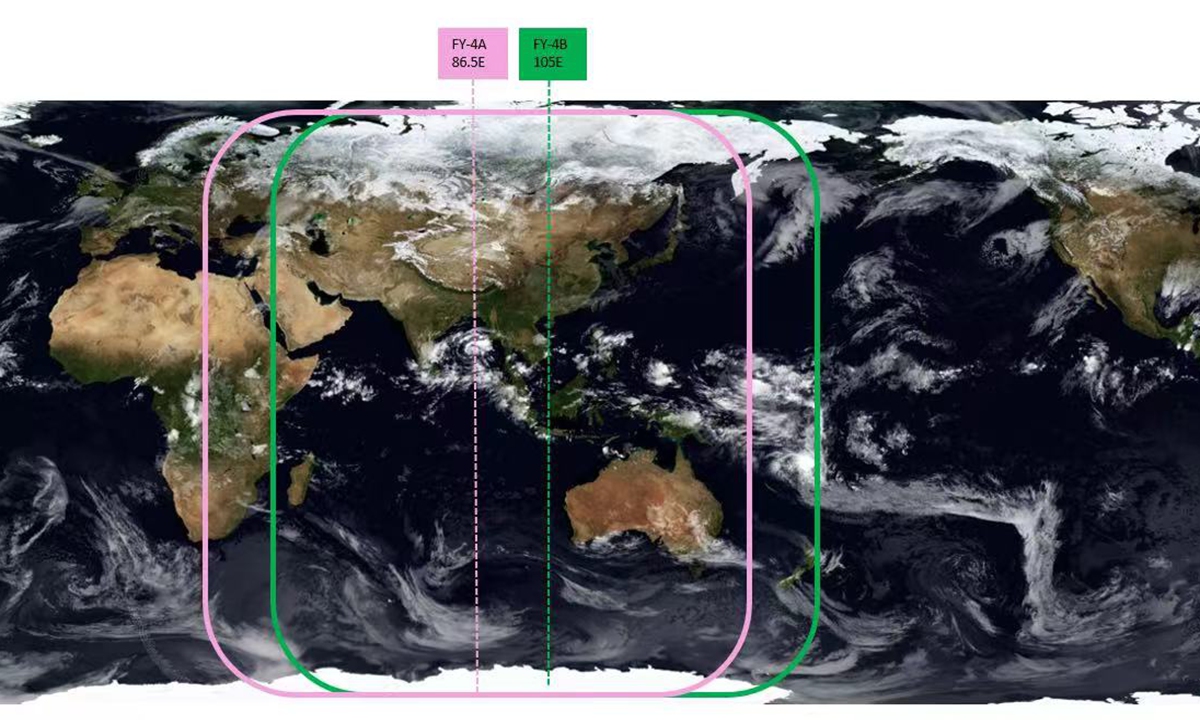
Adjusted geostationary meteorological satellite layout Photo: CCTV
The meteorological satellite Fengyun-4B (FY-4B) successfully succeeded Fengyun-4A (FY-4A) and resumed operational services in the geostationary orbit after drifting and adjusting, which is expected to serve more countries jointly building the Belt and Road Initiative (BRI) by providing data support for weather forecasting, disaster prevention, mitigation and relief, China Central Television reported on Tuesday.
According to the National Satellite Meteorological Center (NSMC), FY-4B was launched in June 2021 and previously carried out operational monitoring services at 133 degrees east longitude, from where it drifted on February 1 this year and positioned at 105 degrees east longitude on February 19. It underwent half a month of operational debugging and resumed operational services on Tuesday.
Zheng Xudong, deputy director of the operation and control room of the NSMC, explained that the adjustment was based on the continuity of observation of the main operational position at 105 degrees east longitude.
Zheng told CCTV that FY-4B currently is in the "young and strong" stage. After the orbit adjustment, FY-4B will provide stronger technical support in strong convective weather monitoring and early warning, especially in the monitoring of sudden small and medium-scale weather systems.
It is reported that FY-4A has started to drift synchronously on Tuesday after FY-4B takes over. FY-4A will drift from 105 degrees east longitude to 86.5 degrees east longitude to continue to carry out observation and services.
As the first satellite of China's second-generation geostationary orbit meteorological satellites, FY-4A was launched on December 11, 2016, and drifted over the equator at 105 degrees east longitude in May 2017. It has been in service for more than seven years. FY-4A, as a scientific research and test satellite while assuming China's geostationary orbit meteorological observation business, has recorded changes in the sky and made important contributions to serving the people's livelihood and global users.
FY-4A officially assumed the duty mission of the International Charter on Space and Major Disasters in January 2022. It plays an important role in monitoring and assessing various types of disasters globally, including typhoons, strong convection, floods, fires, volcanic eruptions, droughts, high temperatures or snow and ice disasters. It plays an indispensable role in supporting the UN Sustainable Development Goals, the Early Warnings for All initiative, as well as international meteorological disaster prevention, mitigation and relief, and in supporting the BRI.
Global Times




